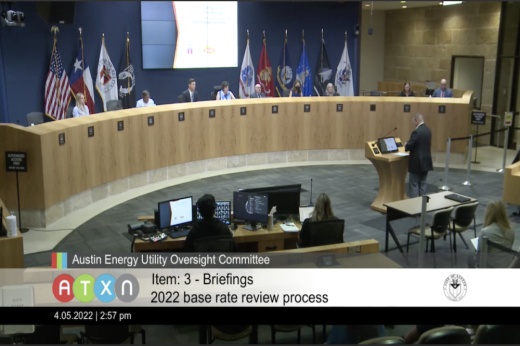Austin Energy is looking to increase its base rates for the first time in ten years to balance raising inflation and infrastructure costs counteract customers reducing their energy usage, which is causing a budget shortfall for the utility company.
Austin Energy, which is funded by the city of Austin as a utility and energy service, will be performing a regular base rate review and raising their customers' electricity bills to help cover their growing costs.
Austin Energy needs a $48 million base revenue increase due to the revenue not being able to keep up with current costs. This increase would affect people’s electricity bills varying amounts depending on the customer class and their electricity usage.
What is a base rate?
The base rate is the coverage of the cost to own and operate the electric system, including maintenance and utility operation costs. These changes will ensure Austin Energy’s financial security, allowing it to continue to give customers reliable electricity, according to the Austin Energy website.
Why are costs going up?
The last time Austin Energy changed its base rate was in 2017, when it decreased its base rate by 6.7%. With the new proposal, it would be raise rates by 7.6%. Ever since 2018, base rate costs for Austin Energy have been on the rise, but in 2020 costs started to outpace base rate revenue as costs continued to climb while revenue stayed fairly constant at around $700 million.
Base revenue is increasing because, according to Rusty Maenius, the vice president of finance at Austin Energy, customers have become more efficient in their energy usage, but the current rate design is not as efficient as the customers, causing the revenue to be unable to keep up with costs. This means the old rate structure was built in a way that assumed the top energy users would to an extent subsidize the lower energy users. However, over the last 20 years, customers have become more efficient in using energy, which has eliminated a large portion of the higher-end energy users, causing Austin Energy to lose revenue.
According to a presentation to the City Council by Austin Energy, “customer growth drives increased infrastructure investment and higher operating costs.” The presentation also explains that “the current rate structure relies too heavily on [kilowatts-per-hour] sales for revenue.” As the amount of customers using Austin Energy keeps rising, the amount of energy being used has started to decline, starting in 2019.
The $48 million proposed by Austin Energy will come from the customers through their raised base rates because the cost of Austin Energy is regulated as a public utility, and customers’ bills fluctuate depending on how much electricity they use.
Costs to customers
Austin Energy places customers in different tiers based on their energy usage. It has proposed to reduce the amount of tiers from five to three to establish more equitable rates and to give customers a more accurate cost of their electricity. In the five-tier structure, customers who receive assistance in paying their bill from Austin Energy through its customer assistance program outweigh those who do not require assistance in the higher-priced tiers two, three and four. According to Maenius, that means that those who require assistance in paying their bills were paying “a greater percent of the cost to serve.” This new structuring will more accurately reflect people’s electricity prices and benefit those who are a part of Austin Energy’s assistance initiative.
According to Austin Energy, a typical residential customer uses 860 kWh per month, which would bring a $15.56 increase to their electric bill in 2023. In summer 2021, over half of summer electricity bills averaged less than or equal to 899 kWh. However, the increase may not be $15.56 if the City Council counteracts with a lower rate increase amount or if it does not approve the rate raise at all.
Currently, those using Austin Energy have the second-lowest average monthly bill in Texas with an average of $90 per month. With the $15.56 increase, the average monthly electricity bill would become $105.56.
For those in tier one, 0-300 kWh per month, there will be a 3.8-cent increase per kWh. In tier two, 301-1,200 kWh per month, there will be an increase of 4.3 cents per kWh. Tier three, 1,201 kWh and up per month, will be charged 4.8 cents more per kWh.
Rate-raising process
To raise the base revenue, Austin Energy will present its final proposal to Austin City Council, and council will set the new base rates. A timeline of Austin Energy’s plan and general fact sheet can be found here.
To raise the base rates, Austin Energy must first determine its spending in a “test year,” then it will determine the cost of the service model through revenue requirements and designate based on usage before designing the new rates. After that, an impartial hearings examiner will help with the public and community aspect of the proposal, followed by a review and recommendation to the Austin Electric Utility Commission, and then the proposal will be voted on by the City Council.
Austin Energy’s proposed changes include adjusting for the higher costs of maintenance and operation, updating its outdated base rate structure for residents, and relying less on energy sales so it can recover fixed costs better and to be more accurate in what it costs to serve the customer by establishing more accurate charges as Austin continues to grow.
Austin Energy is working through the formal process of changing the base rate and will propose its plan at the earliest in late October. The proposed changes, if approved by City Council in the fall, will take effect in 2023.





